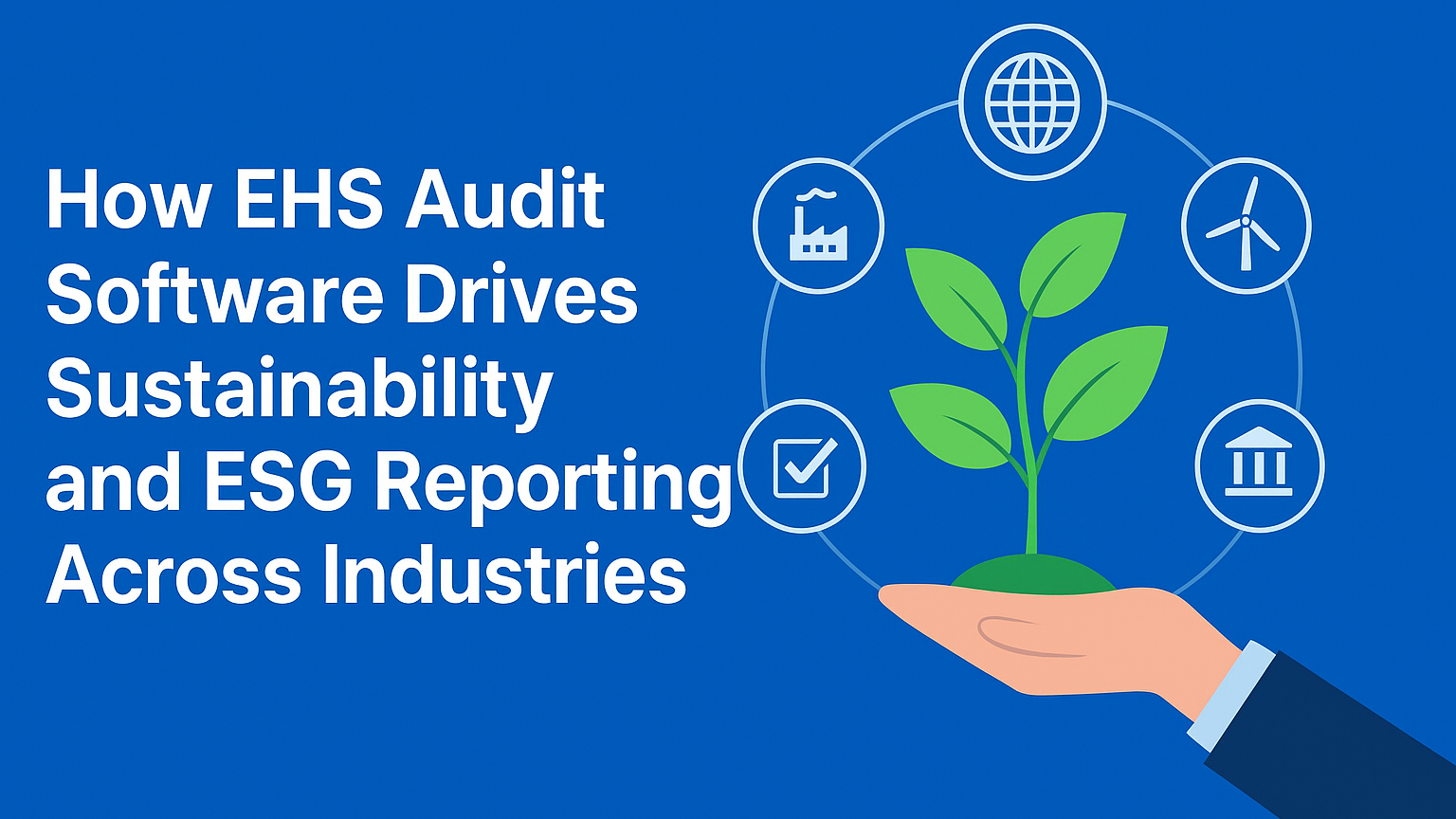Introduction
Across life sciences and manufacturing sectors, sustainability and Environmental, Social, and Governance (ESG) initiatives are no longer optional—they are strategic imperatives. Regulators, investors, customers, and employees are demanding greater transparency, accountability, and demonstrable progress toward responsible business practices. For executives, directors of quality, and assurance leaders, this means aligning operational excellence with ESG frameworks while maintaining compliance with evolving global regulations. EHS audit software is rapidly emerging as a cornerstone technology in this shift. It enables organizations to link environmental, health, and safety compliance with broader ESG strategies. When combined with robust EHS audit management software, companies gain the ability to streamline audits, track sustainability metrics, and produce accurate ESG reports. The result is not only regulatory compliance but also a competitive advantage in the global marketplace.
The Growing Connection Between Sustainability and EHS Audit Software
Why ESG Is Shaping the Future of Industries
In industries like pharmaceuticals, aerospace, automotive, and consumer goods, stakeholders now measure success not only in terms of profitability but also in sustainability impact. Global standards, such as the EU Taxonomy, the SEC’s climate disclosure rules, and frameworks like GRI and SASB, require accurate reporting of emissions, waste management, and workplace safety practices.
Role of EHS Audit Software in Bridging the Gap
EHS audit software aligns compliance and sustainability goals by ensuring organizations have visibility into environmental data, workforce safety outcomes, and governance practices. It captures and standardizes information that feeds directly into ESG reporting, reducing the risks of greenwashing or incomplete disclosures.
Enhancing Transparency with EHS Audit Management Software
Audit Data as a Foundation for ESG Metrics
Sustainability reporting depends heavily on reliable data. EHS audit management software centralizes audit records, risk assessments, and corrective actions in a single platform, allowing ESG teams to pull accurate data for disclosures. This level of transparency helps leaders showcase measurable progress.
Building Trust with Stakeholders
Investors and regulators demand proof, not promises. With audit-driven evidence, companies can demonstrate compliance with environmental standards and workplace safety regulations. This builds credibility with customers, enhances investor trust, and strengthens the company’s position in sustainability indexes.
EHS Audit Software and Environmental Stewardship
Tracking Environmental Performance Metrics
For manufacturers, environmental performance involves emissions control, energy usage, and waste reduction. EHS audit software enables companies to measure these metrics consistently. Automated audits capture detailed insights on carbon emissions, water usage, and hazardous waste handling. Driving Continuous Environmental Improvements. With audit findings feeding into corrective action processes, organizations can identify inefficiencies in operations and proactively reduce environmental impact. This creates a continuous improvement cycle, essential for achieving net-zero and circular economy goals.
Linking Workplace Safety and ESG Through EHS Audit Management Software
Worker Safety as an ESG Priority
Safety is central to the "S" in ESG. EHS audit management software empowers organizations to conduct regular safety audits, track incident reports, and enforce corrective measures. Transparent safety data demonstrates a company’s commitment to employee well-being. Embedding Safety Into Culture By automating safety audits and making results accessible across teams, organizations create a culture where safety is prioritized. This not only supports ESG goals but also enhances operational resilience by reducing accidents and downtime.
Governance Excellence with EHS Audit Software
Ensuring Accountability in Compliance Processes Governance
requires organizations to prove that compliance activities are consistent and traceable. EHS audit software ensures audit trails are intact, actions are tracked, and responsibilities are clearly assigned. This reduces governance risks, especially in highly regulated sectors like pharma and aerospace. Aligning ESG Governance with Global Standards. From ISO certifications to OSHA requirements, governance frameworks vary across geographies. Ehs audit management software allows multinational enterprises to standardize their governance approach while ensuring adaptability to local compliance requirements. Data-Driven ESG Reporting with EHS Audit Management Software Automating Complex Reporting Requirements Manual ESG reporting is error-prone and time-consuming. With EHS audit management software, organizations automate data collection, validation, and reporting. This ensures compliance with reporting frameworks like CDP or TCFD without excessive resource drain. Leveraging Real-Time Insights for Strategic Planning. Audit-driven insights not only feed reports but also inform business strategy. Leaders gain visibility into sustainability risks and opportunities, enabling proactive planning that balances compliance with long-term ESG goals.
Conclusion: Why ComplianceQuest is Essential for Business in 2025
The path to sustainability and effective ESG reporting requires more than spreadsheets and fragmented tools. Organizations must rely on integrated platforms that provide transparency, accuracy, and scalability. The value of EHS audit software lies not only in tangible efficiency gains but also in intangible benefits such as stakeholder trust, cultural transformation, and long-term resilience. ComplianceQuest delivers exactly this. Built on a flexible cloud-based architecture, it unifies EHS, quality, and compliance into a single system of record. For leaders in life sciences and manufacturing, ComplianceQuest ensures seamless ESG reporting, efficient audits, and proactive sustainability management. In 2025, adopting ComplianceQuest is not just a compliance decision—it is a strategic investment in building a sustainable and future-ready business.







